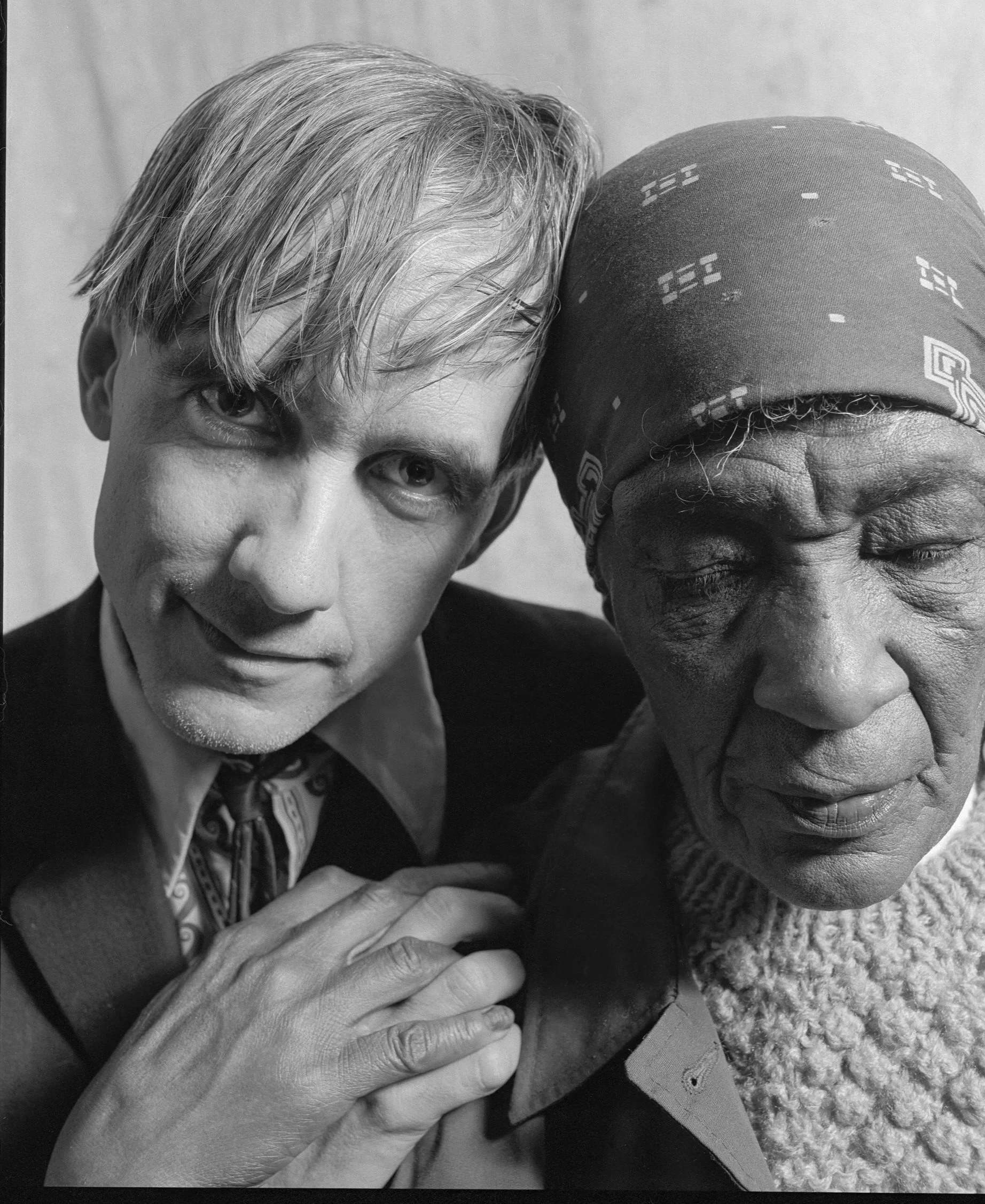John Lee Matney, Jeremy Ayers, 1994, Archival pigment print
Untitled, 1998
John Lee Matney, Sheila , 1998-printed 2021, Video still, archival pigment print, 24 × 35 7/10 in, Editions 1-5 of 5 + 2AP.
Psychological Landscapes REVISITED
Jeremy Ayers was highly influential for me as a photographer when I moved to Athens, GA, in the 1980s. We were never extremely close, but he had a mysterious and powerful creativity that drew me into many questions about art. We started having deeper conversations in 1991 on College Square in Athens when I started delving more into medium-format photography. I bought a Mamiya 6 and then an RZ-67, and Jeremy was one of my first subjects in experiments with portraits. In 1994, I felt I needed a change from Athens and asked him for advice. He said,'. "Leave town for a few years, and you will find things are much better when you return." I left for nine years, worked at my first gallery job, and started exhibiting many of the images and ideas I was working on in Athens. Jeremy's words felt prophetic when I returned in 2003 for a one-person show at Paul Thomas's X-ray Cafe. Athens received the work well. The Athens Banner-Herald covered the show with a full-page article, and Flagpole published a video still on the cover during the exhibition. Jeremy confided to me that he had made paintings from my photographs, and we corresponded until he passed in 2016. Today marks the seventh anniversary of his passing. He is such an inspiration to many people in Athens and worldwide.
In our conversations from 2003 onward, we discussed images and stories. I was particularly intrigued in the early 90s by a circular hologram that Jeremy carried, which he would flash at others with similar holograms, and he would run out of the building where I had a studio. Some of the works in 2003 were inspired by my perceptions of Jeremy with his hologram. The 2003 exhibition with some additional material is linked here. Missing Jeremy dearly.
John Lee Matney, October 24, 2023
Armando. 1996
Still Life Detail , 1994
John Lee Matney, Ane, 1994
Psychological Landscapes
Reprinted by permission of the Athens Banner-Herald with additional material
By Melissa Link
Correspondent
Often calling to mind stills from 1920s-era cinema, Matney's photos capture the figure in various states of contortion and relaxation, creating an illusion of continued motion
Avernus, 1998
Shelia, 1998
In his current exhibit of work at X-Ray Café in downtown Athens, Virginia photographer John Matney II shows a range of figurative and multilayered still lifes offering subtle glimpses into the archetypal states of the human subconscious. Matney, who received an English degree from the University of Georgia in 1988 and then went on to study at the Art Institute of Atlanta, frequently utilizes the nude figure as a mechanism for relating inner emotions crucial to the human condition
''One of the things I struggle with when dealing with the human figure is exploring how to reconcile the dichotomy between the body and the individual in a way that doesn't seem detached,'' explains Matney of his approach to his figurative work.
''I try to integrate the immediacy of video into still photos to achieve a more diverse sense of the nude and the moment,''
Often calling to mind stills from 1920s-era cinema, Matney's photos capture the figure in various states of contortion and relaxation, creating an illusion of continued motion. Matney, whose work has received frequent awards in juried exhibits in several prestigious Washington, D.C.,-area art venues, also works in video, a proclivity that comes across in his still photographic work.
Shelia, 1998
''I try to integrate the immediacy of video into still photos to achieve a more diverse sense of the nude and the moment,'' he explains.
Occasionally using digital layering techniques, Matney adheres to traditional photographic printing processes to produce images imbued with a sense of timelessness and classicism. ''The layering creates a psychological landscape,'' he explains, mentioning his interest in the archetypal subject matter of Jungian psychology.
Such Jungian leanings are apparent in works such as ''Container and the Contained,'' a close-up facial image of an exotic dark-skinned woman leaning alongside a blank-staring human skull. The coupling of female beauty with a classic memento mori symbol offers a subtle statement on the ancient intertwining of the powers of sex and death.
The Container and the Contained, 2002, Archival pigment print, 14 × 14 in, Editions 1-15 of 15 + 2AP.
A similar sentiment comes across in several nude figurative works depicting a dark-lidded young woman in various states of struggle with an over-long strand of pearls. Calling to mind an archetypal Venus figure, the contorted movements and allusions to bondage also infer a subconscious battle involving sex, servility, anguish and ecstasy.
John Lee Matney, Pearls, 1999, Archival pigment print, 14x11 in.
Shelia, 1998
Yesterday, 2001





























